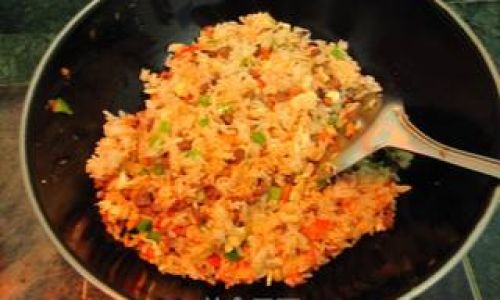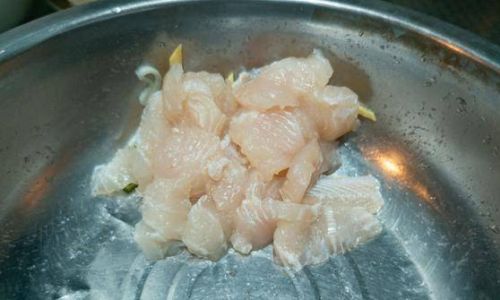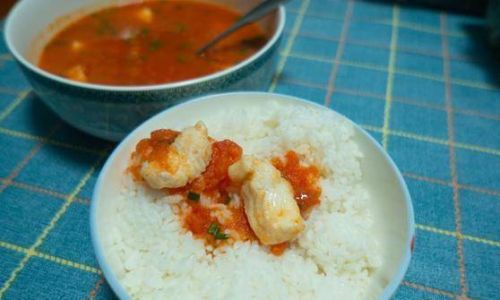Fried rice, a dish celebrated across continents, is often underestimated as a simple leftover meal. Yet, beneath its humble exterior lies a canvas for culinary creativity, where texture, flavor, and aroma converge into a symphony of satisfaction. Whether you’re a novice cook or a seasoned home chef, mastering the art of fried rice requires attention to detail, an understanding of balance, and a willingness to experiment. This article delves into the techniques, ingredients, and secrets that elevate fried rice from ordinary to extraordinary, ensuring every grain of rice is imbued with flavor and every bite leaves a lasting impression.
The Foundation: Choosing the Right Rice
The backbone of any fried rice dish is, of course, the rice itself. While it might seem trivial, selecting the right variety and preparing it correctly are non-negotiable steps toward perfection. Long-grain rice, such as jasmine or basmati, is ideal due to its low starch content, which prevents clumping and ensures each grain remains distinct. Short-grain varieties, like sushi rice, tend to become sticky when stir-fried, resulting in a gummy texture.
Day-Old Rice: The Secret Weapon
Freshly cooked rice is soft and moist, qualities that spell disaster for fried rice. When rice is refrigerated overnight, it dries out slightly, creating individual grains that absorb flavors without turning mushy. If you’re in a pinch, spread freshly cooked rice on a baking sheet to cool rapidly, fluffing it occasionally to release steam. This step is crucial—even a few extra hours of rest can transform the texture.

Building Flavor: Aromatics and Proteins
Fried rice thrives on layered flavors, starting with aromatics that form the dish’s fragrant base. Garlic, ginger, and shallots are classic choices, sautéed until golden to release their pungent oils. For a deeper umami kick, consider adding fermented ingredients like black bean paste, shrimp paste, or a splash of fish sauce. These ingredients add complexity without overpowering the dish.
Proteins: From Classic to Creative
Proteins serve as the dish’s hearty element, offering substance and variety. Traditional options include diced chicken, shrimp, or tofu, each requiring different cooking techniques:
- Shrimp: Cook briefly over high heat to retain tenderness.
- Chicken: Marinate in soy sauce and cornstarch for juiciness.
- Tofu: Press to remove excess moisture, then pan-fry until crispy.
For adventurous eaters, experiment with unconventional proteins like Spam, Chinese sausage, or even fried eggs mixed directly into the rice. Vegetarians can rely on mushrooms, edamame, or tempeh for meaty texture.
Vegetables: Balance and Crunch
Vegetables contribute color, freshness, and texture. Carrots, peas, and bell peppers add sweetness, while bean sprouts or diced zucchini introduce moisture. For a crisp contrast, toss in water chestnuts or julienned cabbage during the final minutes of cooking. The key is to cut vegetables into uniform pieces to ensure even cooking.
The Stir-Fry Technique: Heat, Timing, and Motion
Stir-frying is a high-heat, fast-paced cooking method that demands precision. A well-seasoned carbon steel wok is the traditional tool, distributing heat evenly and allowing for quick tossing. However, a large skillet can suffice if a wok is unavailable.

Mastering the Wok
- Preheat the Wok: Heat the wok over high flame until a drop of water evaporates instantly. Add oil (peanut or vegetable oil works best due to their high smoke points) and swirl to coat the surface.
- Cook in Batches: Overcrowding the pan lowers the temperature, leading to steaming instead of searing. Fry proteins first, then set them aside while cooking vegetables.
- The “Wok Hei” Effect: This term refers to the smoky, charred flavor imparted by intense heat. To achieve it, ensure the wok is scorching hot before adding ingredients.
Eggs: The Silken Thread
Fried rice often includes scrambled eggs, which act as a binder. For fluffy, golden curds, whisk eggs with a pinch of salt and cook them separately in a well-oiled pan. Alternatively, push the rice to one side of the wok, pour beaten eggs into the empty space, and scramble vigorously before mixing with the rice.
Seasoning: The Alchemy of Umami
Seasoning is where fried rice transcends its humble origins. Soy sauce provides saltiness and depth, while oyster sauce adds sweetness and viscosity. For a nutty finish, drizzle toasted sesame oil just before serving. Balance is key—taste frequently and adjust seasonings gradually.
Advanced Flavor Boosters
- Fermented Black Beans: Mince and sauté with garlic for intense savory notes.
- Kimchi: Add a spoonful of fermented cabbage for acidity and heat.
- Curry Powder: A pinch introduces earthy warmth, especially in Thai-inspired versions.
Common Mistakes to Avoid
Even seasoned cooks stumble into pitfalls when making fried rice. Here’s how to sidestep them:

- Using Wet Rice: Soggy grains clump and steam instead of frying.
- Overcooking Vegetables: Overly soft veggies release moisture, ruining texture.
- Underseasoning: Fried rice needs bold flavors—don’t be shy with sauces.
- Overcrowding the Pan: Cook in batches to maintain high heat.
- Using Cold Ingredients: Room-temperature proteins and veggies cook evenly.
Creative Variations and Cultural Twists
Fried rice’s beauty lies in its adaptability. Explore global interpretations to expand your repertoire:
- Thai Basil Fried Rice: Toss in holy basil, chili, and ground pork.
- Japanese Chahan: Use sake, mirin, and pickled ginger.
- Indonesian Nasi Goreng: Add kecap manis (sweet soy sauce) and a fried egg on top.
- Spanish Arroz Frito: Incorporate chorizo, smoked paprika, and saffron.
Serving and Pairing Suggestions
Fried rice shines as a standalone meal but pairs beautifully with sides like spring rolls, dumplings, or grilled meats. Garnish with fresh herbs (cilantro, green onions), lime wedges, or chili flakes for brightness. For a fusion twist, serve it with a side of kimchi or a crisp Asian salad.
The Final Touch: Presentation and Mindfulness
Presentation elevates even the simplest dishes. Mound fried rice into a bowl, press lightly, then invert onto a plate for a perfect dome. Scatter toasted sesame seeds or crispy fried shallots on top. Encourage diners to mix in garnishes at the table, ensuring each bite is customized.
Conclusion: The Journey Beyond the Recipe
Fried rice is more than a leftover lifesaver—it’s a testament to culinary ingenuity. By mastering technique, embracing creativity, and respecting ingredients, you transform a handful of pantry staples into a dish that delights and nourishes. Whether you prefer the timeless simplicity of egg fried rice or the boldness of a spicy Szechuan version, remember that perfection lies not in strict adherence to rules, but in the harmony of flavors you create. So grab your wok, fire up the stove, and let the sizzle of stir-frying guide you to fried rice mastery.






0 comments